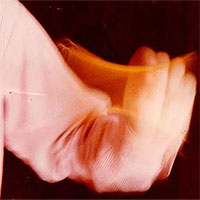According to a study published in the journal Science Advances, diamonds only begin to form when exposed to an electric field, even a weak electric field of about 1 volt.
“The results of the study suggest that the electric field should be considered as an important additional factor affecting crystallization,” said Yuri Palyanov, the research team leader and leading diamond expert in Russia. of diamonds”.
Diamonds are made of carbon atoms bonded in a crystalline structure. They form more than 90 miles (150km) below the Earth’s surface, where pressures reach many gigapascals and temperatures can rise as high as 2732 degrees Fahrenheit (1,500 degrees Celsius). But many factors behind the birth of this gem remain a mystery.
To unravel this mystery, a team of scientists simulated conditions in the Earth’s mantle and tried to create diamonds in this “artificial mantle” .
The researchers gathered the starting ingredients needed to create diamonds – carbonate powders and carbonate-silicates similar to the carbonate-rich molten substances that are abundant in mantle. They placed these powders in artificial coatings in the lab with pressures up to 7.5 GPa, temperatures of 1,600 degrees Celsius, and electrode-powered electric fields ranging from 0.4 to 1V.
After about 40 hours, diamond (and graphite) was formed, but only when the researchers applied an electric field of about 1V – weaker than most household batteries.
Besides, diamond and graphite only form at the cathode (the negative part of the electric field). This site provides electrons to initiate a chemical process: certain carbon-oxygen compounds in the carbonate undergo a series of reactions to become carbon dioxide, which can eventually form carbon atoms. diamond.
These man-made diamonds are very small, no larger than 0.007 inches (1/5 mm) in diameter, but they are surprisingly similar to natural diamonds.
Both are octahedral in shape and contain small amounts of other elements and compounds, including relatively high levels of nitrogen and silicate-carbonate inclusions, also known as “birthmarks,” the researchers said. diamond.
These experiments demonstrated that the local electric field plays an important role in diamond formation in the Earth’s mantle. According to the journal Chemistry World, this local voltage could be generated by molten rock and highly conductive mantle liquids, but the specific strength of these electric fields is unknown.


